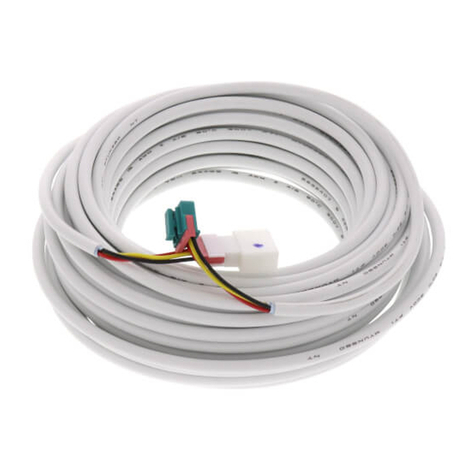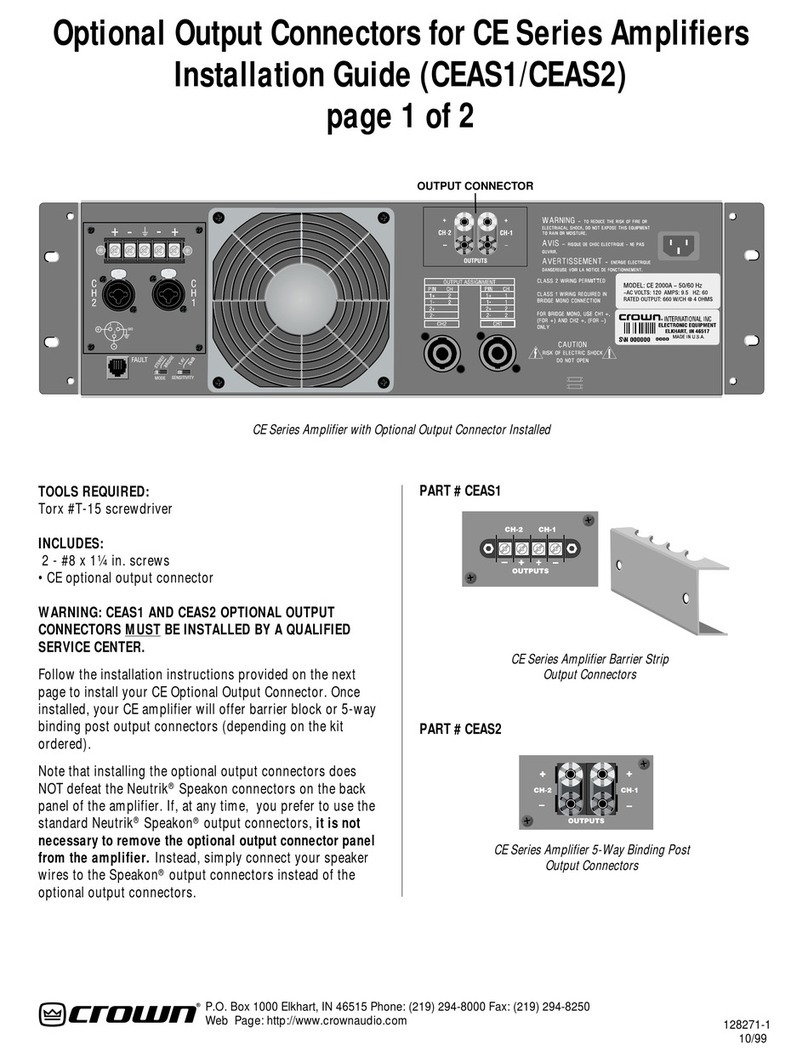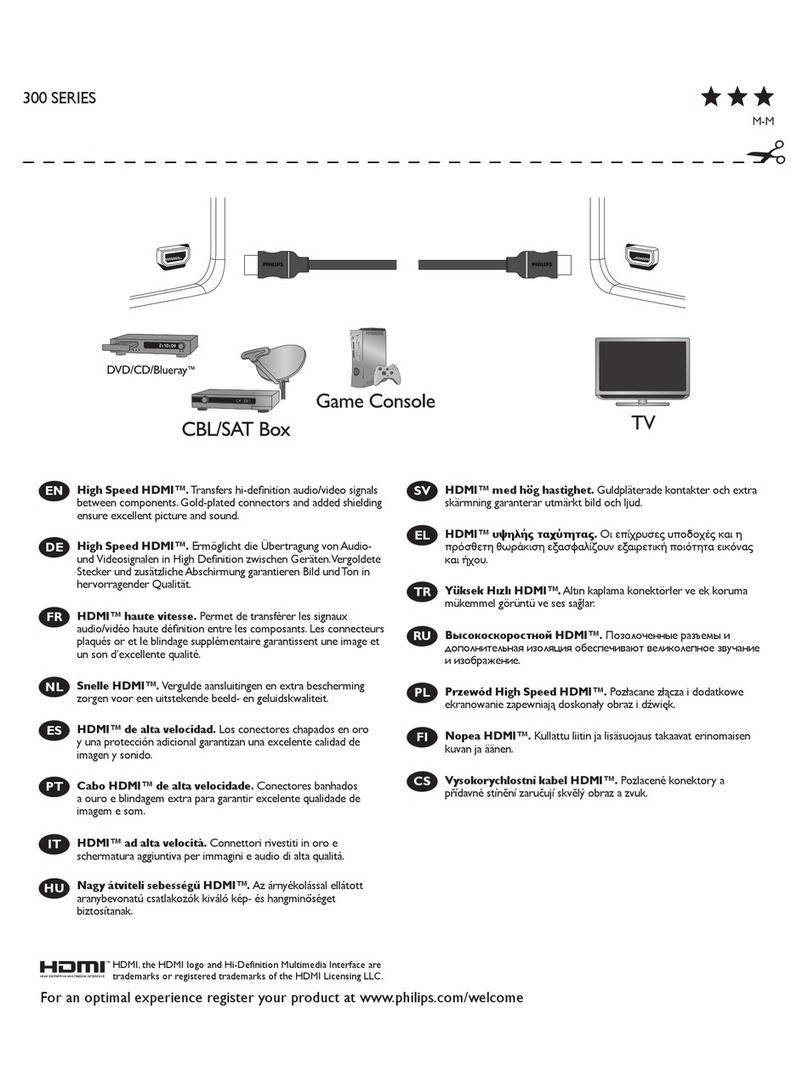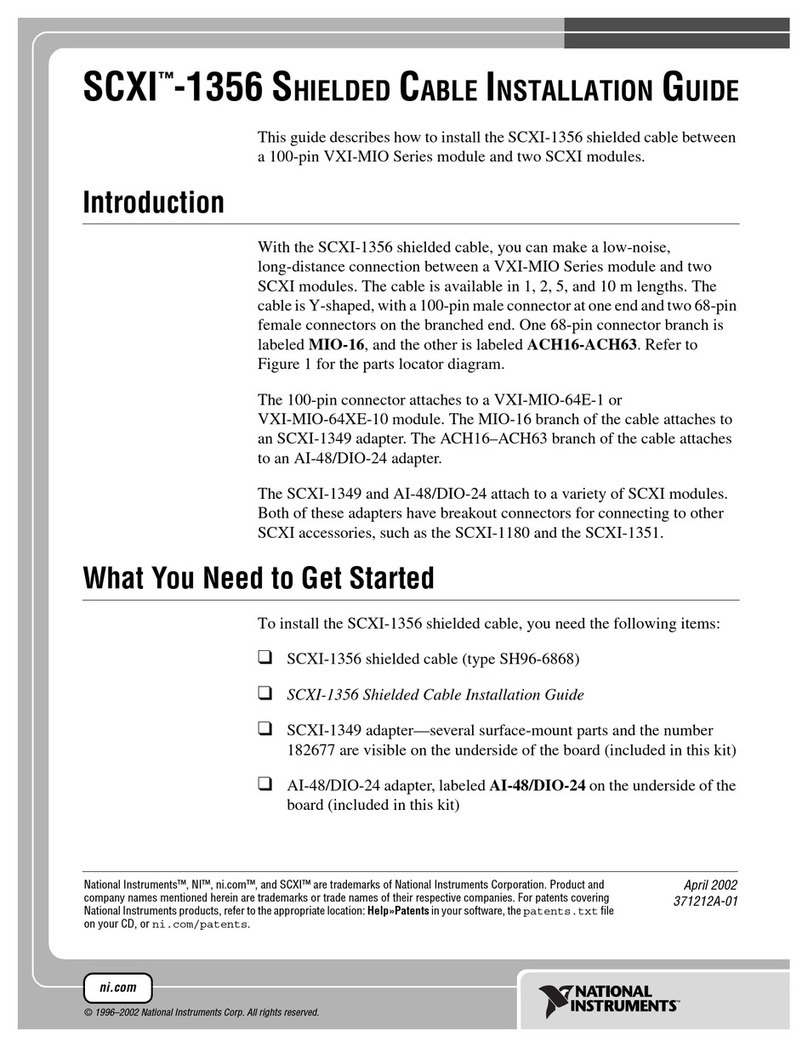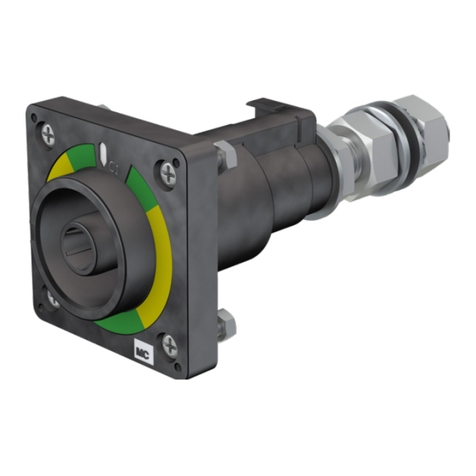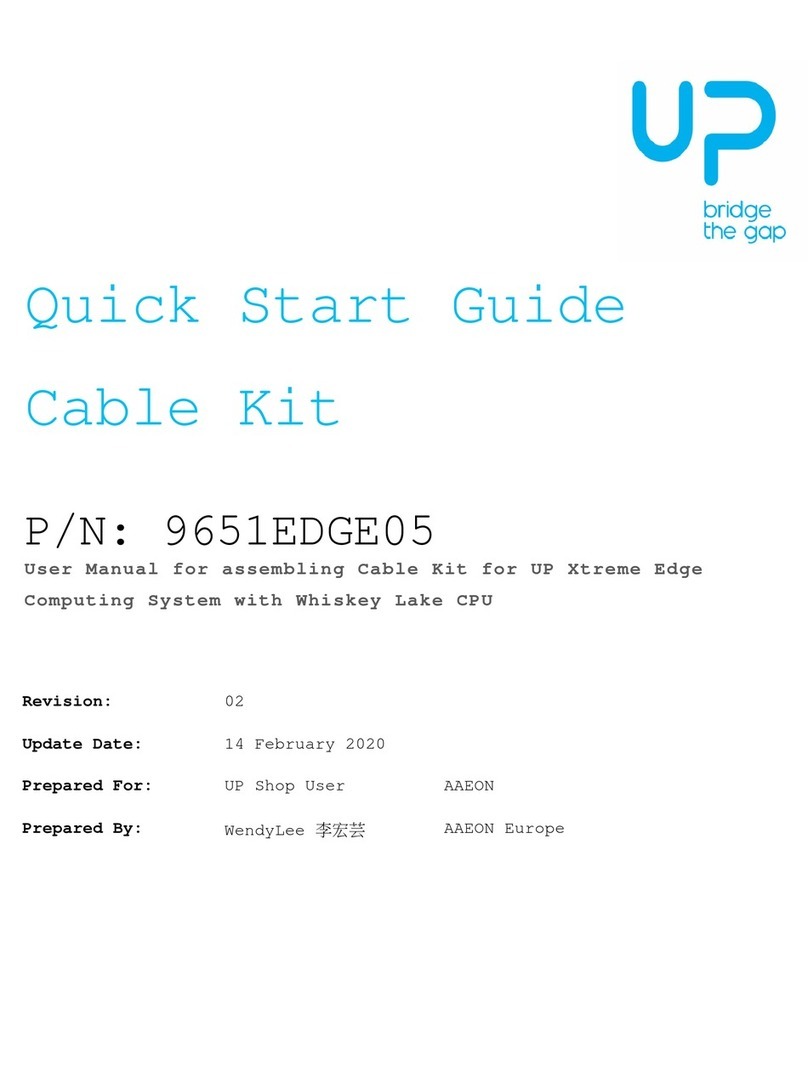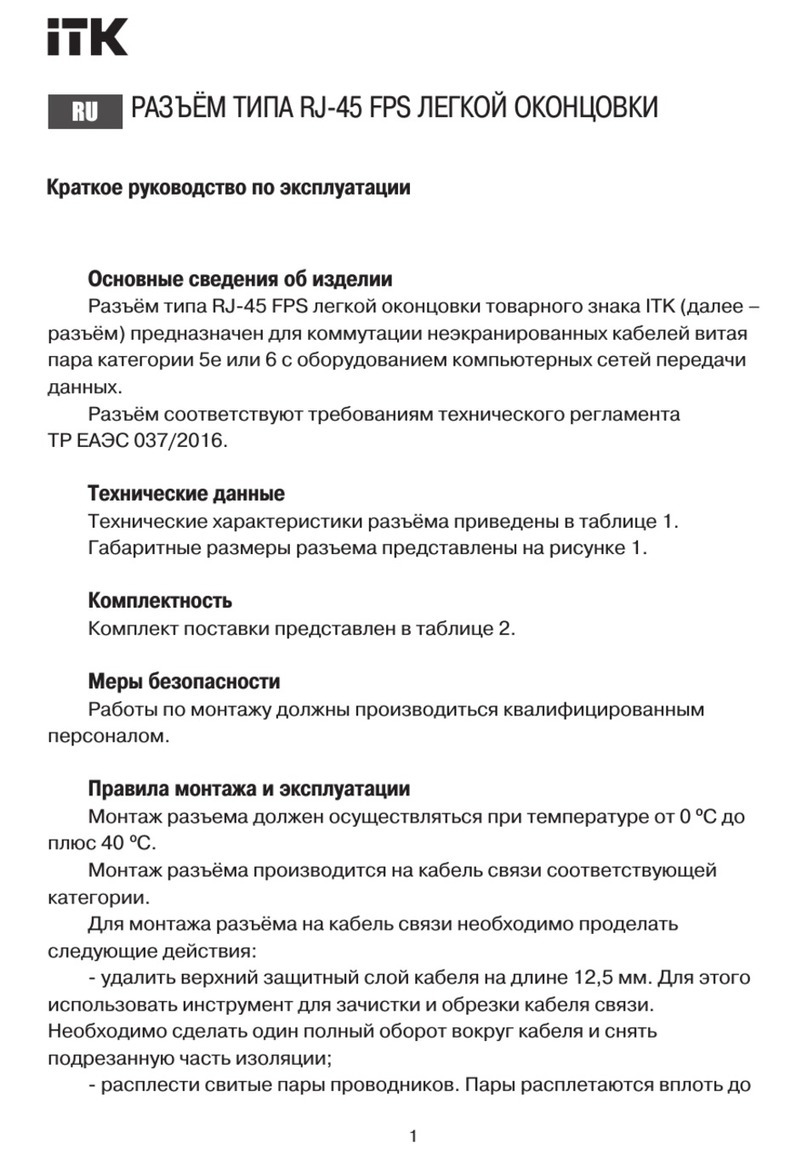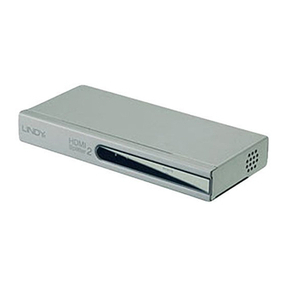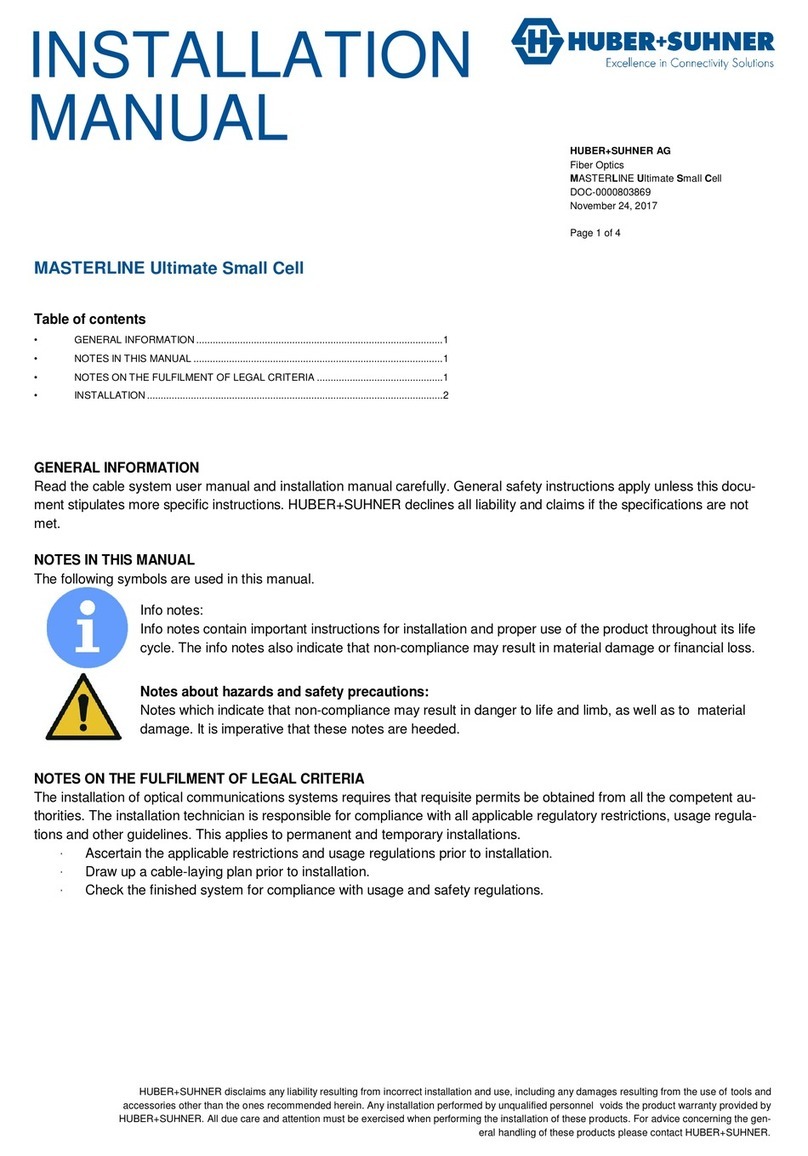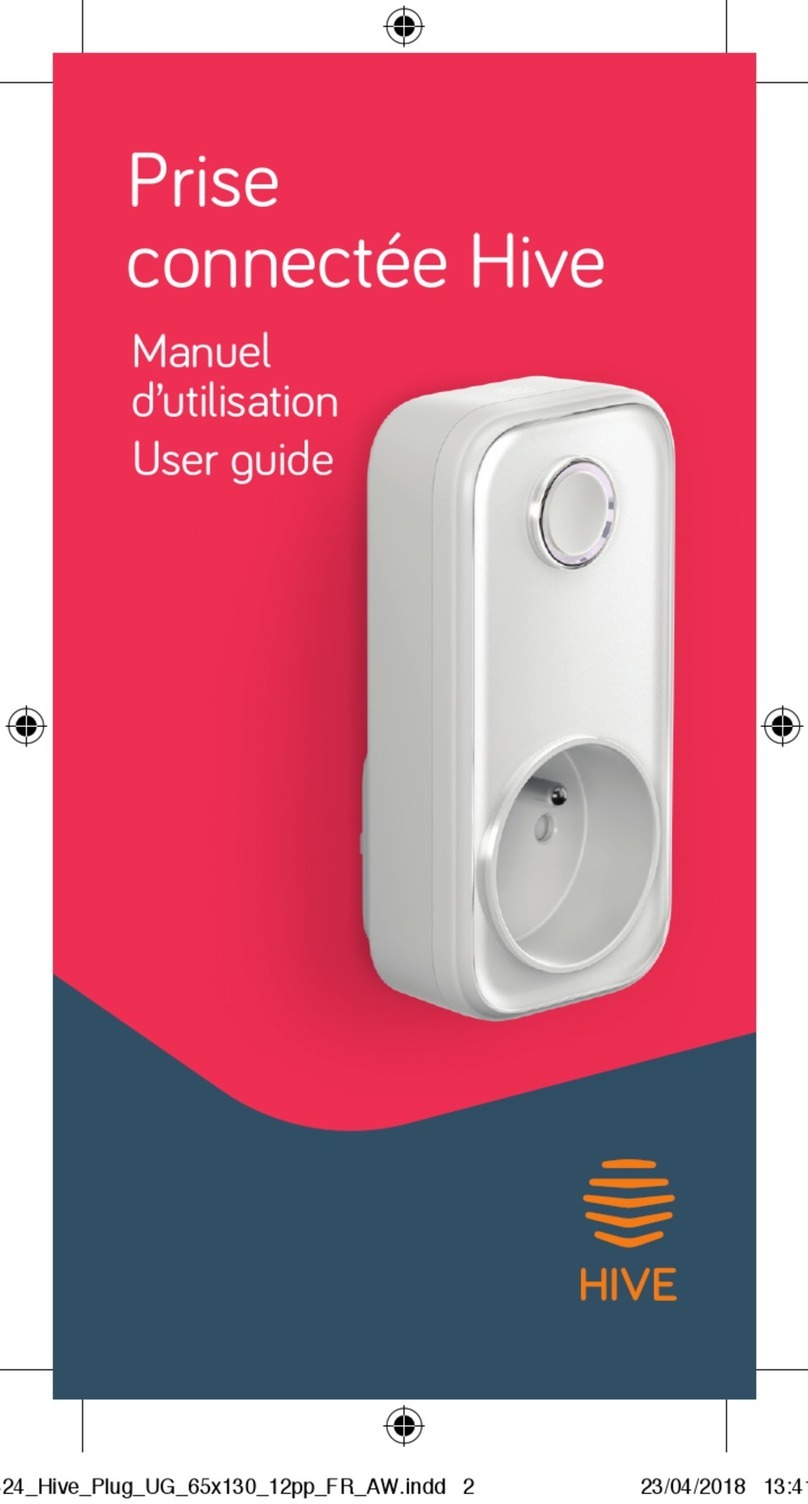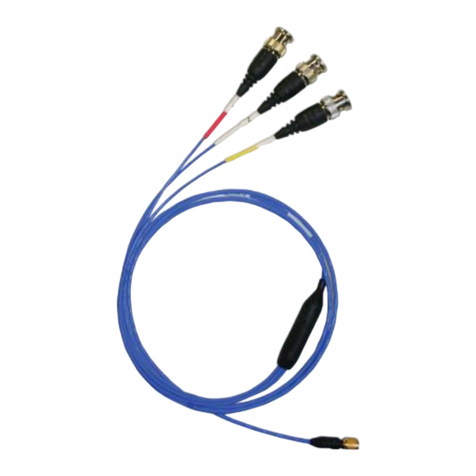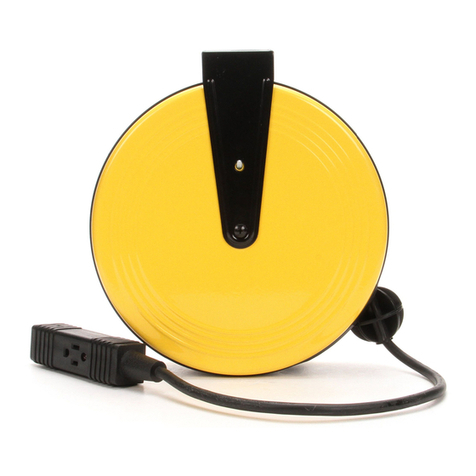ClipperCreek ACS User manual

ClipperCreek, Inc.
Innovative Infrastructure for
Electric and Hybrid Vehicles
• • • • • • •
Model ACS
User’s Manual

ACS User’s Manual
PLEASE NOTE
This user’s manual includes the latest information at the time of printing.
ClipperCreek, Inc. reserves the right to make changes to this product without
further notice. Changes or modifications to this product by other than an
authorized service facility may void the product warranty.
If you have questions about the use of this product, contact your customer
service representative. Refer to the Customer Support section located in this
guide.
ACS User’s Manual, Version 06, December 2011
ACS User Manual 111222v06.pmd
Copyright © 2011. ClipperCreek, Inc.
All rights reserved. Printed in the USA.
Please visit ClipperCreek’s Website @ www.clippercreek.net

ACS User’s Manual
CONTENTS
IMPORTANT SAFETY INSTRUCTIONS ......................... 1
Instructions Pertaining to a Risk of Fire or Electric Shock .... 1
SAFETY INFORMATION .................................................. 2
FCC INFORMATION ........................................................ 2
OPERATION ...................................................................... 3
FRONT PANEL .................................................................. 4
INSTALLATION ................................................................. 5
Service Connections ........................................................... 5
Mounting Procedures ......................................................... 8
Wiring Instructions .............................................................. 9
SPECIFICATIONS ........................................................... 10
CUSTOMER SUPPORT ................................................... 11
MAINTENANCE ............................................................. 11
WARRANTY INFORMATION ....................................... 12

ACS User’s Manual
Page 1
IMPORTANT SAFETY INSTRUCTIONS
Carefully read these instructions and the charging instructions in your vehicle
owner’s handbook before charging your electric vehicle.
The following symbols may be found in your handbook or on labels affixed
to your conductive charge station:
This means pay particular attention. Notes contain helpful suggestions.
Warning This symbol means danger. You are in a situation that could
cause bodily injury. Before you work on any electrical equipment, be
aware of the hazards involved with electrical circuitry and standard
practices for preventing accidents.
Caution This symbol means be careful. You are capable of doing
something that might result in damage to equipment.
Instructions Pertaining to a Risk of Fire or Electric Shock
When using the the ACS, the following basic electrical safety precautions should
be followed:
• Use this charge station to charge electric vehicles equipped with an
SAE-J1772tm charge port only. See the vehicle’s owner’s handbook to
determine if the vehicle is equipped with the correct charge port.
• Make certain the charge station’s SAE-J1772
TM charge cable is
positioned so it will not be stepped on, tripped over, or otherwise
subjected to damage or stress.
• There are no user serviceable parts inside. Refer to the Customer
Support section in this manual for service information. Do not attempt
to repair or service the charge station yourself.
• Do not operate your charge station if it or the SAE-J1772
TM charge cable
is physically open, cracked, frayed, or otherwise visibly damaged.
Contact your Service Representative for service immediately. Refer to
the Customer Support section in this manual for information on the
Service Representative in your area.
•DonotplacefingersinsideofthecouplerendoftheSAE-J1772
TM
charge cable.
• Do not allow children to operate ths device. Adult supervision is
mandatory when children are in proximity to a charge station that is in
use.
Save these instructions for future reference.
Note

ACS User’s Manual
Page 2
SAFETY INFORMATION
Warning: Turn off input power to your charge station at the circuit
breaker panel before servicing or cleaning the unit.
VENTILATION: Some electric vehicles require an external ventilation
system to prevent the accumulation of hazardous or explosive gases
when charging indoors. Check the vehicle’s owner’s handbook to
determine if your vehicle requires ventilation during indoor charging.
Those vehicles which follow the SAE-J1772TM standard for communica-
tion with the charging station can inform the ACS that they require an
exhaust fan. The ACS is not equipped to control ventilation fans. Do
not charge your vehicle with the ACS if ventilation is required by your
vehicle.
Caution: DO NOT charge your vehicle indoors if it requires
ventilation. Contact your Service Representative for information.
FCC INFORMATION
This device complies with Part 15 of the FCC rules. Operation is subject to the
following two conditions: (1) This device may not cause harmful interference,
and (2) This device must accept any interference received, including interference
that may cause undesired operation.
This product has been designed to protect against Radio Frequency Interference
(RFI). However there are some instances where high powered radio signals or
nearby RF-producing equipment (such as digital phones, RF communications
equipment, etc.) could affect operation.
If interference to your charge station is suspected, we suggest the following
steps be taken before consulting your ClipperCreek Sales and Service
Representative for assistance:
1. Reorient or relocate nearby electrical appliances or equipment during
charging.
2. Turn off nearby electrical appliances or equipment during charging.
Caution Changes or modifications to this product by other than
an authorized service facility may void FCC compliance.
Note
Note

ACS User’s Manual
Page 3
OPERATION
The ACS Electric Vehicle Charging Station is a compact wall-mounted charging
station that provides the Plug-in Hybrid or Battery Electric Vehicle (together
Plug-In Electric Vehicles, or “PEV”) user with a safe and manageable link between
the power grid and the PEV.
Figure 1. The ACS Front Panel
The ACS is very easy to use. Just unwrap the SAE-J1772TM charge cable and
plug the vehicle connector firmly into the vehicle’s charge port.
Normally, the vehicle will immediately request a charge using a special communi-
cation line in the cable and within a few seconds the green Charging light will
turn on and charging will begin. After an average driving day, the vehicle battery
pack will require several hours to recharge completely. Charging overnight is the
most convenient way to maintain healthy batteries and ensure the vehicle’s full
range will be available for the next day.
When the vehicle has stopped charging, the green Charging light will turn off.
Remove the charge cable from the vehicle charge port. To interrupt a charge in
progress, press and hold down the latch release lever on the charge cable
handle, then remove the charge cable from the vehicle charge port.

FRONT PANEL
The front panel on the ACS has four indicator lights:
Power (yellow), indicates that power is available.
Charging (green), indicates that AC power is currently applied to the vehicle.
Power Fault (red), indicates that the ACS is not wired correctly. The problem can
be due to improper grounding or a missing earth ground. The wiring should be
examined by a qualified electrician.
Charging Fault (red), indicates that the ACS is unable to communicate with the
vehicle correctly.
Table 1. Panel LED Information
Page 4
ACS User’s Manual
* The ACS will automatically restart after 15 seconds

Page 5
ACS User’s Manual
INSTALLATION
Service Connections
Caution To reduce the risk of fire, connect only to a circuit provided
with the appropriate maximum branch circuit overcurrent protection in
accordance with the National Electrical Code, ANSI/NFPA 70.
For a model ACS-15, use a 15A circuit breaker
For a model ACS-20, use a 20A circuit breaker
For a model ACS-25, use a 25A circuit breaker
Caution This is a single-phase device. Do not connect all 3 phases of
a 3-phase feed !!! Yo u may u se an y o ne ph ase o f a 3- pha se wy e-
connected feed. The center-point of the 3 phases (usually used as
Neutral) must be grounded somewhere in the system. A current-
carrying Neutral as well as a Ground connection are required by the
ACS, as shown in Figure 3.
Caution The phase used must measure 120V to Neutral. Earth Ground
must be connected to Neutral at only one point, usually at the Service
Entry Breaker Panel.
Caution If a 3-phase feed is from a Delta-connected secondary, the leg
used must have a center-tap. That tap must be Grounded. Only a phase
on either side of the center-tapped leg can be used. See Figure 4 below.
Caution Warranty is void if this unit is wired improperly
Warning Only a qualified electrician should perform the installation.
The installation must be performed in accordance with all local electrical
codes and ordinances.
Only 3 wires are connected, but care must be taken that the service transformer
secondary connection is definitely known, and the 3 wires from the main circuit
breaker panel are connected and labeled correctly. Figures 2, 3, and 4 below
show the most common service transformer secondary wiring formats.
Notice that L1, Neutral & Ground are labeled on each diagram. Those transformer
outputs correspond to the same inputs on the ACS. Also, each of the two 3-
phase diagrams shows an L2 and an L3 output, which are not used. Do not
connect more than one phase of a 3-phase secondary to the ACS. This is a
single-phase device.

Page 6
ACS User’s Manual
The Neutral at the service panel must be connected to earth ground somewhere
in the system on any of the three connection arrangements. Ground-fault
protection is not possible unless the Neutral (center-tap on the service trans-
former) is connected to an earth ground. If no ground is provided by the
electrical service, a grounding stake must be driven into the ground nearby,
following local electrical codes. The grounding stake must be connected to the
ground bar in the main breaker panel, and Neutral connected to ground at that
point.
Warning Local electrical codes must always be followed when
installing the grounding stake.
The following diagrams illustrate the 3 service transformer secondary connec-
tions most common in the United States.
Figure 2. 220/240V Single Phase
Figure 3. 208V 3-Phase, Wye-Connected
L1
L2 (NOT USED)
NEUTRAL
120V
120V
GROUND
L3 (NOT USED)
L2 (NOT USED)
L1
GROUND
NEUTRAL
120V

ACS User’s Manual
Page 7
With a wye-connected secondary, any one of the three legs, in addition
to neutral, can be used to provide 120V to the ACS. For example, L1 &
Neutral, L2 & Neutral, or L3 & Neutral. Be sure the center point is
grounded to earth somewhere in the system.
Figure 4. 240V 3-Phase, Delta-Connected, with center-tap on one leg.
Note
Caution With the delta connection, one leg must be center-tapped, and
only one of the two phases on either side of the center tap can be used.
The phase used must measure 120V to neutral. The third line (L3) of the
delta is 208V, with respect to neutral, and is sometimes referred to as a
“stinger”. Do not use this third line! Consult the transformer
manufacturer’s literature to be sure the single leg can supply the
required power.
Caution A 3-phase delta-connected transformer secondary without a
center-tap on one leg is not usable with the ACS. No “neutral” point is
available to be connected to ground for ground-fault protection, and the
ACS will not allow the contactor to close if it does not sense the
presence of a ground wire connected to a “neutral” point on the
transformer secondary.
L3 (NOT USED)
L1
L2 (NOT USED)
NEUTRAL
GROUND
120V

ACS User’s Manual
Page 8
Locate the wall mounting position of the EVSE:
• The three ACS service conductors are shielded by a 3 foot flexible conduit.
The ACS must be positioned such that this conduit can reach a nearby
service panel or junction box.
• Position the bottom of the charge station at a comfortable height and at
least 18 inches above the ground. Ensure that the LEDs on the front panel
of the EVSE can clearly be seen by anyone who will be operating the
device.
• The ACS has four mounting holes spaced in a 2” wide by 10” tall
rectangular pattern. Use a template to mark hole locations on the wall.
For Hollow-Wall Construction:
• Place the unit such that at least two (but preferrabley all four) mounting
holes can take advantage of solid structural framing inside of the wall or a
strong wall surface such as plywood.
• For any remaining mounting holes which do not have a solid mounting
structure (such as drywall without a solid backing) it will be necessary to
use proper anchoring hardware such as drywall toggles or molly bolts.
For Solid-Wall Construction:
• To secure the unit in concrete, pre-drill appropriately sized holes and use
multi-set or wedge anchor hardware at all four mounting points.
• To secure the unit in brick or stone, pre-drill appropriately sized holes and
use sleeve anchors at all four mounting points.
Mounting Procedures
Figure 5. Mounting the ACS to a hollow wall

ACS User’s Manual
Page 9
Wiring Instructions
Route the ACS conduit to a nearby service panel or junction box. Use the
included ¼” trade size watertight fitting to provide a moisture-resistant seal with
the service panel or junction box. If necessary, drill a 1/2” diameter hole to
accomodate the liquid-tight fitting or use the included 1/4” NPT to 1/2” NPT
thread reducer kit.
Machine screw size #10 hardware is recommended for mounting the ACS. Screw
shafts of at least 2” are recommended. The ACS mounting holes are 3/16” in
diameter, so ensure that the screw heads do not exceed this size. Place
appropriately sized washers between the screw heads and the ACS enclosure
mounting flanges.
Before connecting the ACS service conduc-
tors, please carefully read the section of this
manual titled Service Connections, on page 5.
If you are unsure of the type of power
provided at the service panel, please consult
with your local utility or call your Service
Representative for assistance.
Figure 6. Wiring the ACS in a junction box
Note
The three ACS service conductors use
stranded 12AWG, 75ºC copper wire. The
insulation of each conductor is color coded
for standard 120VAC installation:
Green: Ground
Black: Line 1 (120VAC to Ground)
White: Neutral
Note

ACS User’s Manual
Page 10
SPECIFICATIONS
Line Input Power
Vo l t a g e & Wi r i n g 1 2 0 VA C s i ngle-phase - Line, Neutral, and Safety
Ground.
Service Conductors L1, Neutral, and Ground use 12AWG, 75ºC copper wire
Vo l t a g e R a n g e : 85 VAC t o 132VAC
Frequency 60Hz
Current ACS Model Circuit Breaker Maximum Current
ACS-15 15A 10A or 12A
ACS-20 20A 15A or 16A
ACS-25 25A 20A
Note that the maximum current for the vehicle is set
by the duty cycle of the Pilot waveform. Refer to the
ACS serial number label for the specific factory-set
maximum current rating.
Output Power Variable depending upon the ACS model and vehicle
demand. At 120VAC, the ACS-15 outputs approxi-
mately 1.2KW (10A) or 1.4KW (12A), the ACS-20
1.8KW (15A) or 1.9KW (16A), and the ACS-25
2.4KW (20A).
Dimensions Dimensions are for the enclosure only
Height 280 mm (11 in)
Width 100 mm (4 in)
Depth 80 mm (3 in)
Weight 3 kg (7 lbs) with SAE-J1772TM connector and 20’ cable
Environment
Operating Temperature -30°C (-22°F) to +50°C (+122°F)
Enclosure Rating NEMA 4X - watertight
AgencyApprovals NRTL Listed, FCC Part 15 Class B

ACS User’s Manual
Page 11
CUSTOMER SUPPORT
Call your ClipperCreek, Inc. Service Representative at any time, 24 hours a day, at
the number below. PLEASE HAVE THE MODELNUMBER AND SERIAL
NUMBER AVAILABLE WHEN YOU CALL. This information is printed on the
labels on the sides of the device enclosure. If your call is made after business
hours or on weekends, please leave your name, telephone number, the unit serial
number, and a brief description of the problem. A Service Representative will call
back at the earliest opportunity.
Distributor Service
Number Here
1. Turn off your charge station at the circuit breaker before cleaning.
2. Clean your charge station using a soft cloth lightly moistened with mild
detergent solution. Never use any type of abrasive pad, scouring
powder, or flammable solvents such as alcohol or benzene.
MAINTENANCE
Warning To reduce the risk of electrical shock or equipment
damage, be cautious while cleaning the connectors and case.
The ACS requires no periodic maintenance other than occasional cleaning.

ACS User’s Manual
Page 12
WA R R A N T Y I N F O R M AT I O N
ClipperCreek, Inc. warrants this product to be free from defects in material,
manufacture and design for a period of one year after the date of purchase. If
this product is defective in materials, manufacture or design during this warranty
period, ClipperCreek, Inc. will, at its option, repair or replace the product. Repair
parts and /or replacement products may be either new or reconditioned at
ClipperCreek’s discretion. This limited warranty does not include service to
repair damage from improper installation, improper connections with peripherals,
external electrical fault, accident, disaster, misuse, abuse or modifications to the
product not approved in writing by ClipperCreek, Inc. Any service repair outside
the scope of this limited warranty shall be at applicable rates and terms then in
effect.
All other express and implied warranties for this product including the warranties
of merchantability and fitness for a particular purpose, are hereby disclaimed.
Some states do not allow the exclusion of implied warranties or limitations on
how long an implied warranty lasts, so the above limitation may not apply to you.
If this product is not as warranted above, your sole and exclusive remedy shall
be repair or replacement as provided above. In no event will ClipperCreek, Inc.,
any of its authorized sales and service representatives, or its parent company be
liable to the customer or any third party for any damages in excess of the
purchase price of the product. This limitation applies to damages of any kind
including any direct or indirect damages, lost profits, lost saving or other special,
incidental, exemplary or consequential damages whether for breach of contract,
tort or otherwise or whether arising out of the use of or inability to use the
product, even if ClipperCreek, Inc. or an authorized ClipperCreek, Inc. representa-
tive or dealer has been advised of the possibility of such damages or of any claim
by any other party. Some states do not allow the exclusion or limitation of
incidental damages for some products, so the above limitation or exclusion may
not apply to you.
This warranty gives you specific legal rights, and you may also have other rights
which may vary from state to state.

ClipperCreek, Inc.
11850 Kemper Rd., Suite E
Auburn, CA 95603
www.ClipperCreek.net
Table of contents
Popular Cables And Connectors manuals by other brands
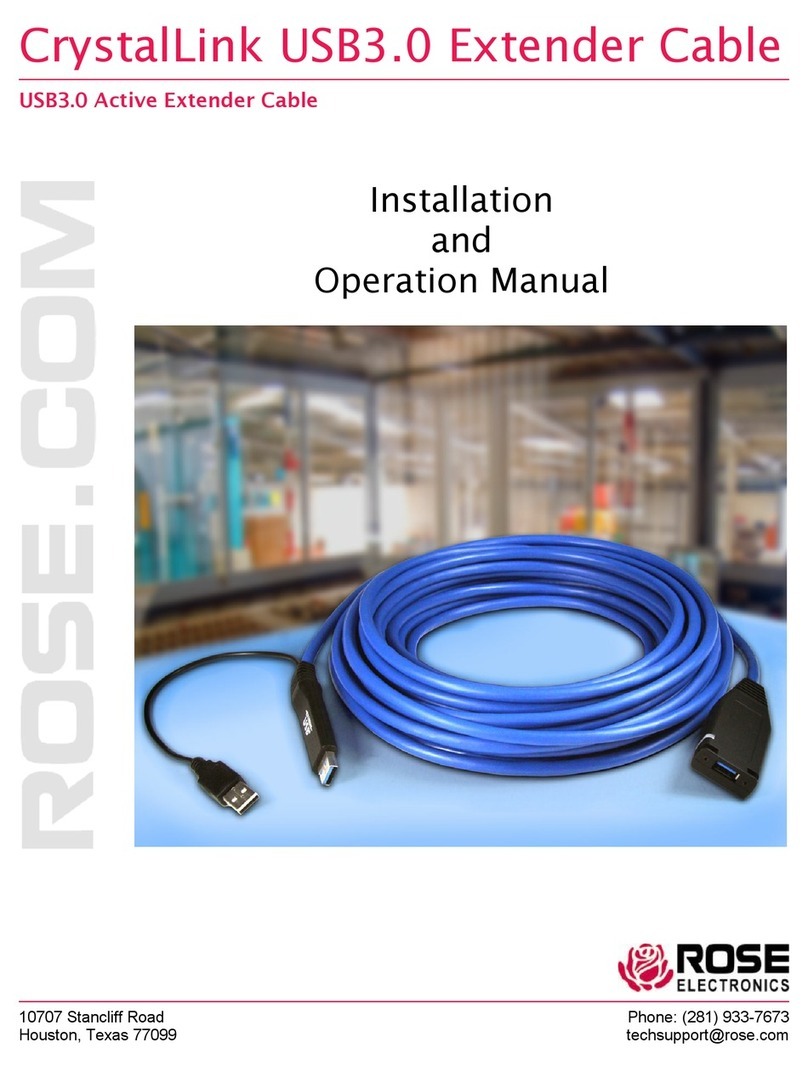
Rose electronics
Rose electronics CrystalLink CLK-CAB1U3TP-15M Installation and operation manual
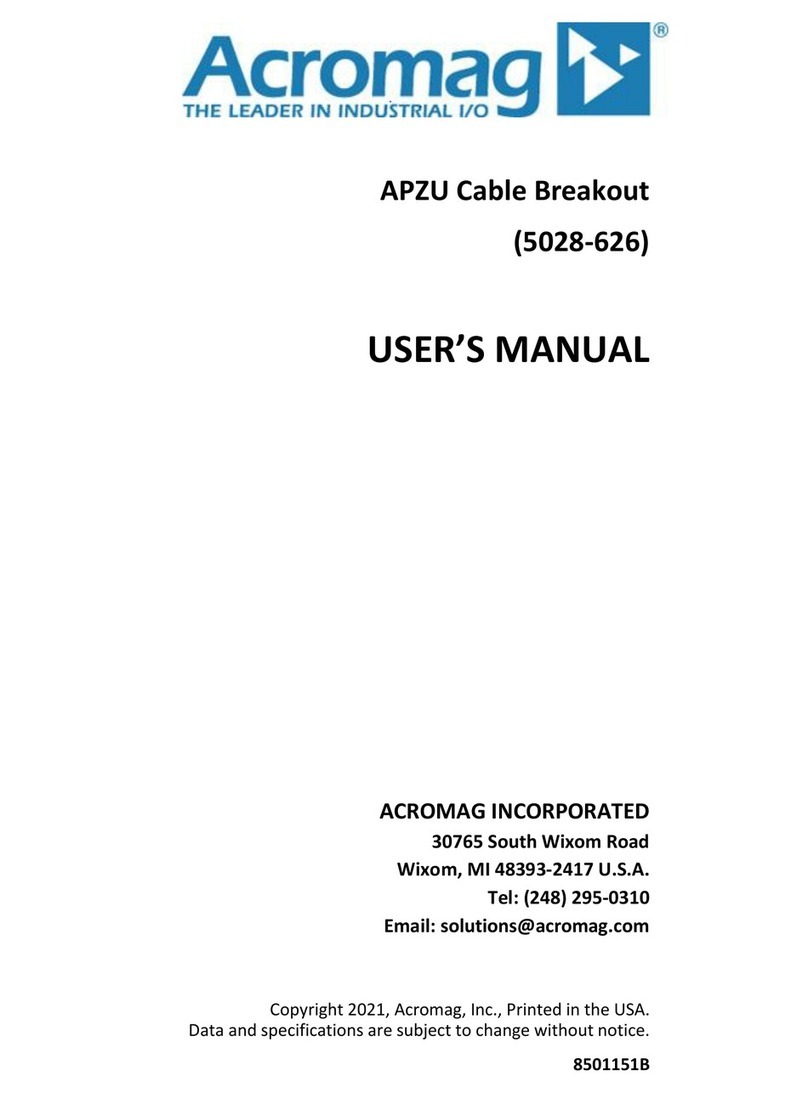
Acromag
Acromag 5028-626 user manual

Voxx
Voxx AH731CR manual
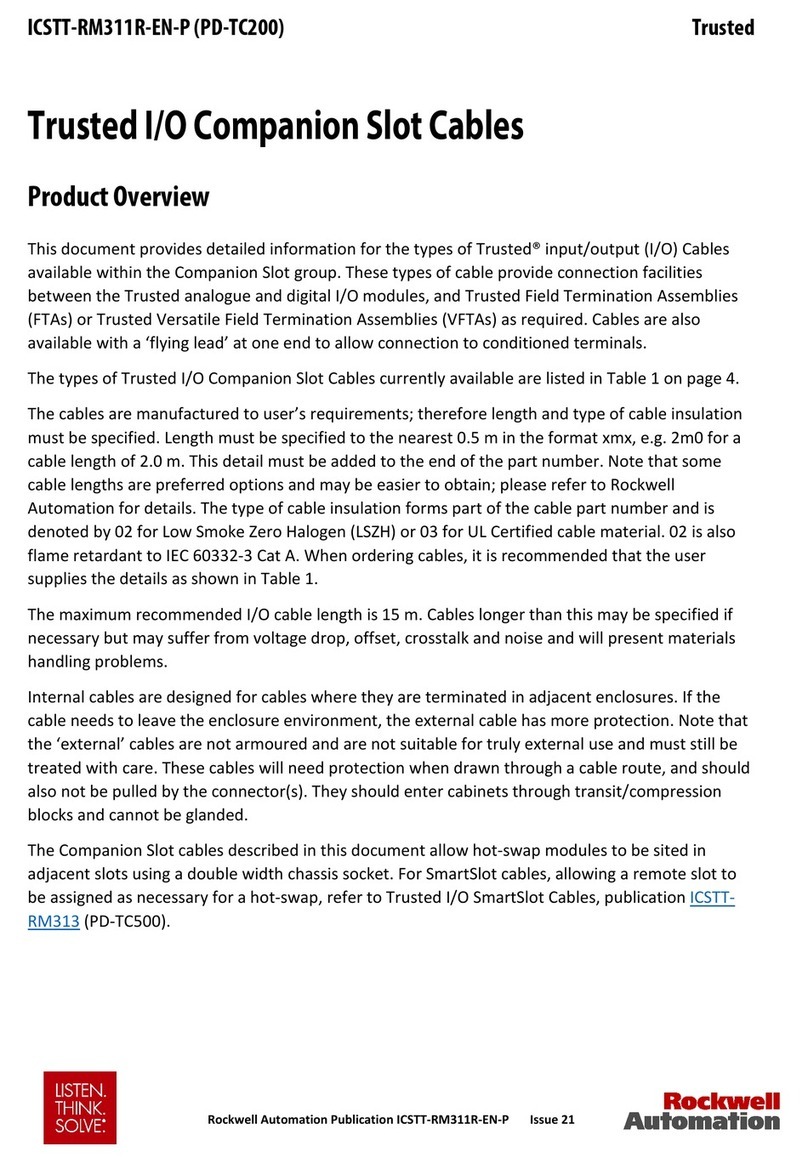
Rockwell Automation
Rockwell Automation Trusted TC-201-02 m Series Product overview
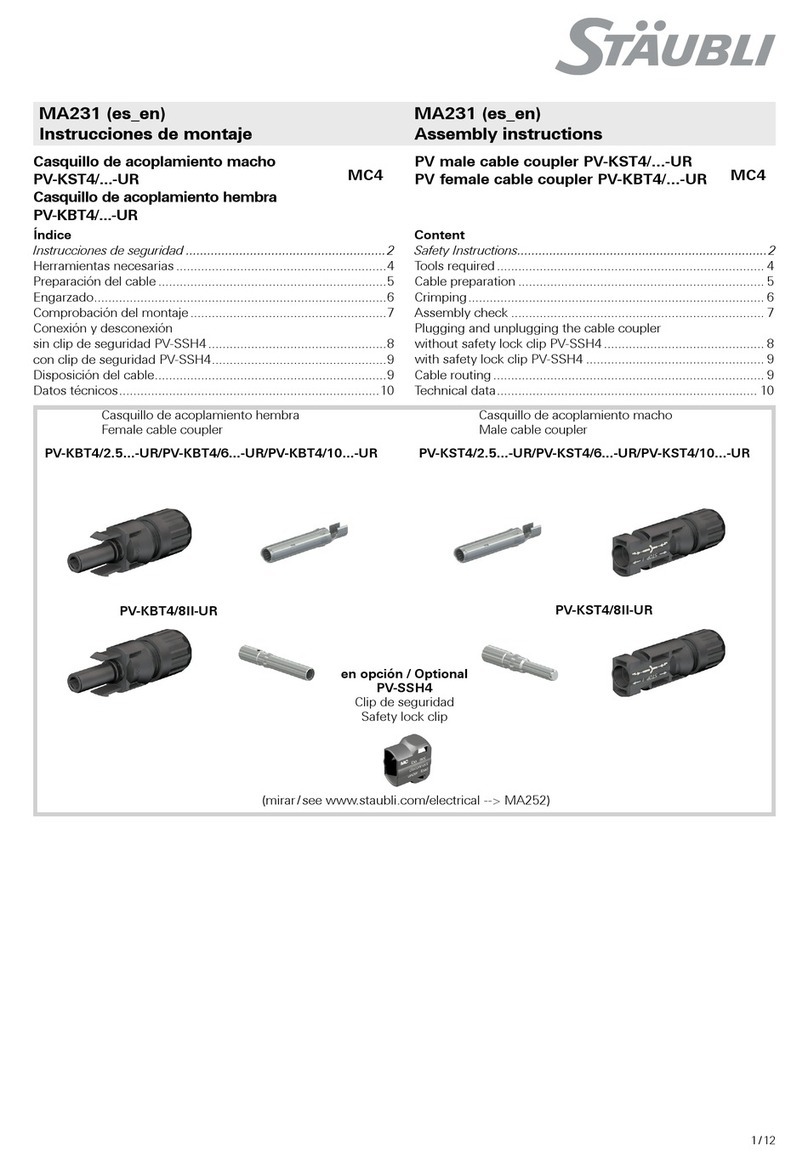
Staubli
Staubli PV-KST4 UR Series Assembly instructions
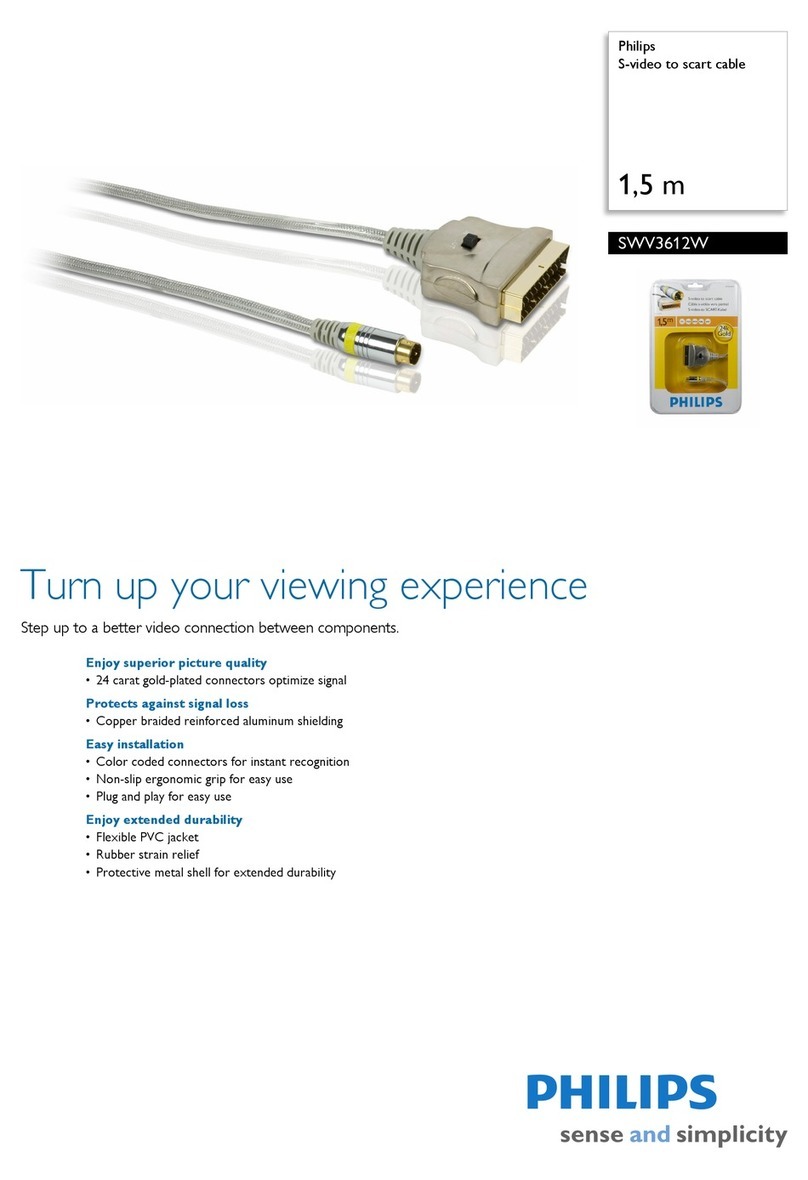
Philips
Philips SWV3612W Specifications
